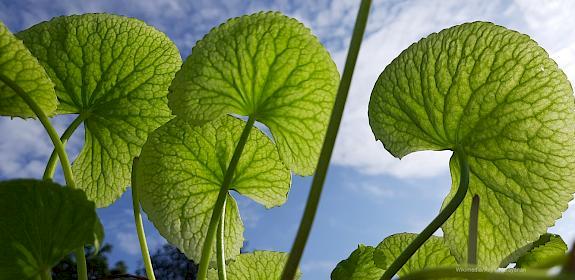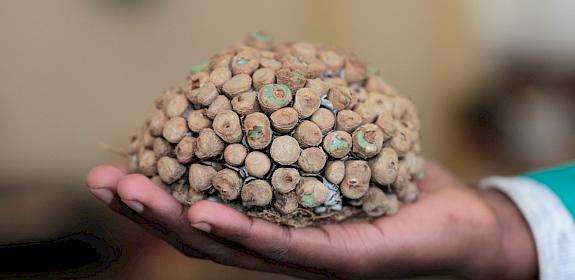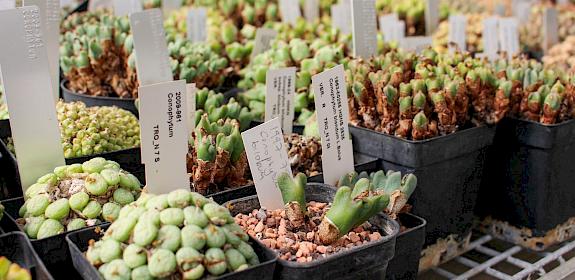
Jatamansi collection
i
Urgent need to bolster sustainable trade in medicinal and aromatic plants to benefit ecosystems and people
Over 800 medicinal and aromatic plants are listed on CITES Appendix II, including important flagship species for health and well-being such as Candelilla Euphorbia antisyphilitica, Jatamansi Nardostachys grandiflora, Agarwood-producing species, and African Cherry/Pygeum Prunus africana.
These species, sourced from the wild, are in thousands of consumer goods around the world, with 60-90% of plant species in global trade estimated to be wild harvested. Harvesting usually occurs in highly biodiverse ecosystems, often by rural communities for whom trade in derived ingredients is a critical source of income.
Earlier in 2022, the Inter-governmental Science Policy Platform on Biodiversity and Ecosystem Services (IPBES) released the Sustainable Use of Wild Species Assessment, emphasising that one in five people rely on wild plants, algae and fungi for their food and income. However, thousands of harvested species are at risk, mainly from a combination of overharvesting and habitat loss, with over 20% of plant species used globally for medicinal and aromatic purposes considered to be threatened with extinction on the IUCN Red List. This threatens wider ecosystems while also posing a risk to harvesting communities, businesses, and consumers who rely on wild plant ingredients.
Many of these species are at risk from increasing demand and a lack of sustainability considerations. This is largely due to a lack of visibility and accountability: the ingredients are difficult to trace back to the source along complex supply chains, information is not easy to access, and available materials do not provide clear insights into conservation and social risks and opportunities. At the same time, businesses feel little pressure from buyers or customers to ensure the sustainability of wild-sourced ingredients, as public understanding of what ‘wild’ ingredients are and what risks are associated with them is very low.
Trade can make a positive contribution to biodiversity conservation through sustainable use and fair and equitable sharing of the benefits arising from the utilisation of biological resources. Fostering a nature positive role of sustainable and legal trade would play a key role in sustaining the livelihoods of communities that depend on wild plants. For example, over 15,000 harvesting households are estimated to be dependent on trade in wild-harvested Jatamansi Nardostachys grandiflora in Nepal’s Himalayas. A TRAFFIC-led project in Nepal focuses on maximising the conservation and livelihood benefits from this trade through the application of the market-based voluntary standard FairWild.
CITES CoP19 Agenda item 82 includes draft Decisions for consideration by Parties, calling for the further analysis of challenges and opportunities in matters related to trade in these species (with a focus on e-commerce value chains and the review of the Resolution Conf. 10.19 (Rev. CoP14) on Traditional medicines), as well as raising awareness and understanding of CITES regulations for the sustainable use and conservation of these important species.
In support of the implementation of the draft Decisions, TRAFFIC has investigated the benefits and challenges of supporting sustainable trade in CITES-listed medicinal and aromatic plants (MAPs) through the use of - and collaboration with - certification schemes, standards and guidelines (also see information documents on Voluntary certification standards and the implementation of CITES for trade in medicinal and aromatic plant species: PC24 Inf. 12 and CoP18 Inf. 36).
We have supported CITES Parties in developing approaches to non-detriment findings and developed materials for raising awareness of CITES regulations for MAP industry stakeholders and consumers. Finally, TRAFFIC also has long-standing experience analysing e-commerce value chains and convening stakeholders to combat illegal trafficking online.
In support of the draft Decisions, TRAFFIC would like to draw attention to the recent United Nations Food and Agriculture Organization, the IUCN SSC Medicinal Plant Specialist Group and TRAFFIC’s joint report ‘WildCheck: Assessing the Risks and Opportunities of Trade in Wild Plant Ingredients’, and the accompanying platform at WildCheck.info. The WildCheck platform aims to enhance awareness of MAP value chains amongst industry and consumers, support awareness of CITES regulations and trade interventions, and encourage sustainable use and legal trade in MAPs. TRAFFIC calls on Parties, the CITES Secretariat and other organisations to use the collaborative WildCheck platform to support the objective of long-term sustainable trade in MAP resources.
In support of Parties’ discussions during CoP19, and specifically on Agenda item 82, trade in medicinal and aromatic plants (and others related), TRAFFIC and collaborators are organising a side event (Caribe 5, 17:15 on 16 November) that will allow Parties to exchange experience around solutions to ensure that trade in MAPs is sustainable.






